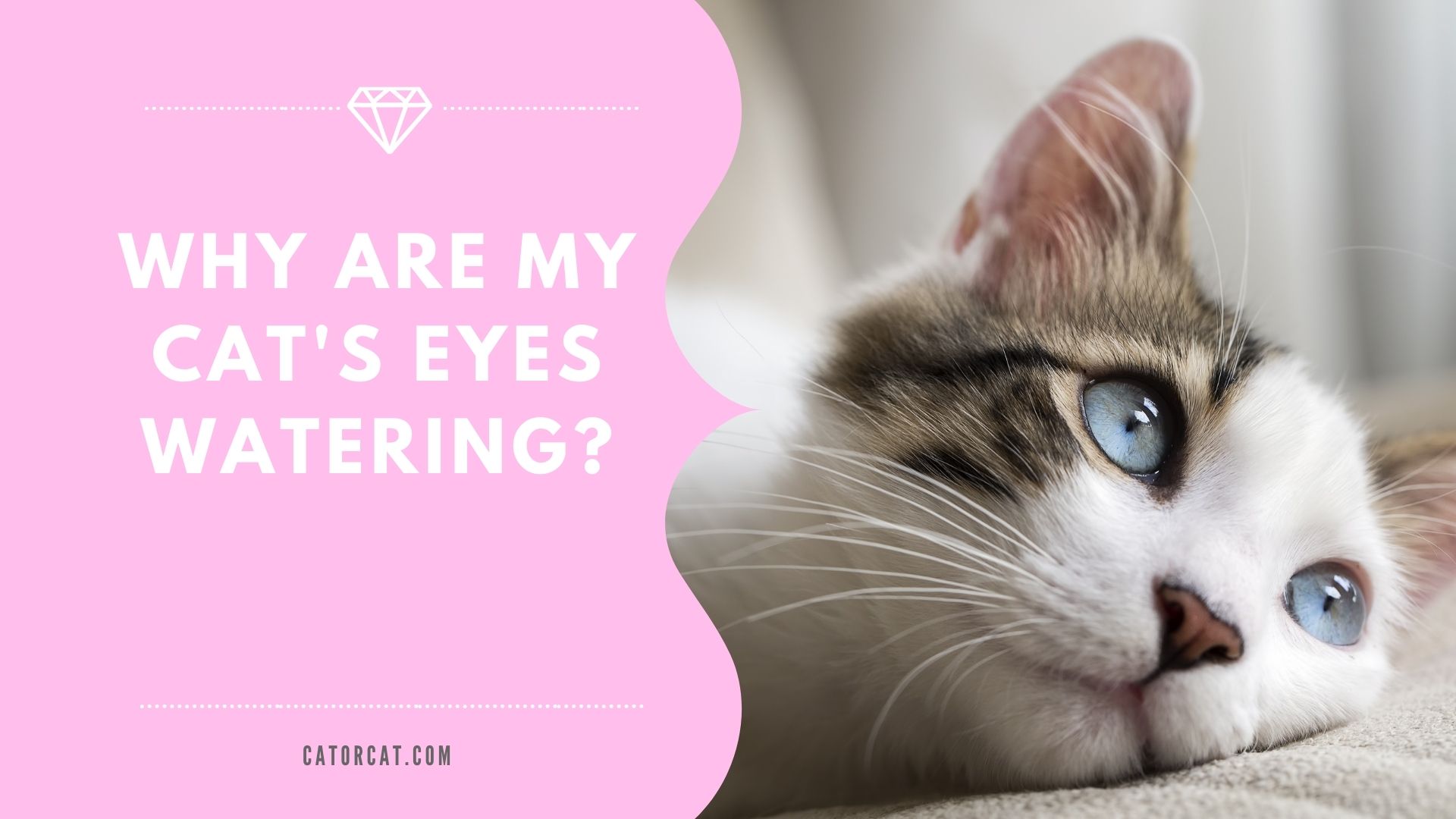
A variety of reasons cause watery eyes in cats. Like humans, a cat can react to allergens, or it could also signify something more serious.
If you’re worried about your cat’s watery eyes, then you’ve come to the right place. In this article, we’ll take a look at some of the most common causes of watery eyes in cats, as well as what you can do about it.
What are the Symptoms of Watery Eyes in Cats?
When can you say that your cat’s watery eyes are a problem? And when should you worry? Though watery eyes are relatively easy to recognize, here are the most common signs:
- Red eyes
- Squinting
- Frequent scratching of the eyes
- Inflammation of the eyes
- Eye discharge
- Eye rubbing
- Fur loss around the eyes
- Cloudiness in the eyes
- Swelling
- Reddish-brown staining under the eyes
- Thick, yellow, or green eye discharge
- Odor coming from the eyes
- Impaired vision
While watery eyes are a normal response to allergies, it’s time you bring your feline friend to the vet when it is accompanied by other symptoms, such as discharge and swelling.
If the symptoms last for more than two days, that’s also a significant sign that it’s time to have your cat checked.
6 Common Causes of Watery Eyes in Cats
Several reasons can cause watery eyes in cats, but these six are the most common:
1. Cat Breed
Short-faced cats usually experience watery eyes because they are predisposed to have short noses and bulging eyes. Their eyes typically get more exposure to the elements, such as dirt, pollen, and other allergens. They can also easily scratch and inflame their eyes, or another animal might injure their eyes in a brawl.
Also known as brachycephalic cats, short-faced cats include Persians, Himalayans, and Exotic Shorthairs.
If you’re unsure about your cat’s breed, a cat DNA test is a great way to find out. There are home kits used for testing your cat’s health with cat DNA that you can take on your own. Aside from knowing your cat’s exact breed makeup, a DNA test kit can also include health markers that provide you with information on heritable diseases your cat may have.
This kind of information can help you better care for your cat since you are being shown some of your cat’s predisposition to certain diseases, such as epiphora, defined by an abnormal overflow of tears.
2. Allergies
Just like humans, cats can suffer from watery eyes due to allergens. These include mold, mildew, dust, pollen, strong perfumes, household cleaners, certain medications, and other allergens.
Related: Toxic foods for cats
3. Upper Respiratory Infections
A cold or flu can cause watery eyes in cats. Other symptoms of an upper respiratory infection include sore throat, coughing, sneezing, and fever.
4. Trauma to the Eye
If a foreign object is stuck inside your cat’s eyes, it can cause more production of tears. An injury or trauma to the eye, such as a scratch, can cause redness and watering.
5. Congenital Abnormalities
Congenital abnormalities such as distichiasis and entropion can cause your cat’s eyes to be unusually watery. These conditions occur when the cat’s eyelids or eyelashes turn inward, which irritates the eyeball and causes tear ducts to overproduce.
6. Feline Conjunctivitis
This is a condition in which there is an inflammation of the conjunctiva, which is the light pink lining around cats’ eyes. Inflammation may be caused by bacteria, viruses, and other irritants.
The condition can cause redness in the eyes, sensitivity to light, swelling, and overproduction of tears. Though it usually heals on its own, there are cases when the symptoms are severe. And when left untreated, it can cause more problems and even cause feline vision loss.
Other possible causes of watery eyes in cats include:
- Eyelid tumors
- Glaucoma
- Facial bone fractures
- FIV or Feline Infectious Peritonitis
- FIP or Feline Immunodeficiency Virus
Watery Eyes Diagnosis
When you bring your kitty to the vet, they will have to go through a general physical examination, a possible allergy test, and other tests to determine the cause of your cat’s unusual watery eyes.
The vet can evaluate symptoms of infection and signs that your cat may be suffering from accompanying symptoms that may include the eyes being red and inflamed, any signs of pain, or bacterial infection.
Some of these tests include The Schirmer Tear Test to evaluate tear levels in the eye, a Fluorescein Stain Test to view trauma or injury to the eye; as well as Radiographs, such as an MRI or CT scan to check for any internal eye abnormalities.
Treatment of Watery Eyes in Cats
Treatments vary depending on the causes of the condition. If the reason is allergens, removing them from your home is needed. Your cat can also take antibiotics if an infection has occurred. An antihistamine may also be recommended to reduce inflammation caused by the allergens.
Surgery may be needed for other causes, such as an eyelid tumor, as well as for distichiasis cases, where removal of the eyelashes takes place.
Conclusion
Watery eyes in cats can be caused by an allergen and will mostly go away on their own, but there are some cases when it is a sign of a more serious health condition.
If there are signs that your cat is suffering from watery eyes accompanied by other symptoms such as eye discharge, swelling, and other issues, it may be time to set an appointment with your vet.
Certain breeds and congenital disorders can cause watery eyes in your kitty, and if you’re worried, the best decision is always to bring your cat to the vet.
